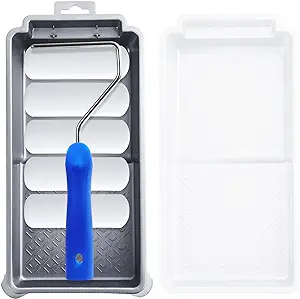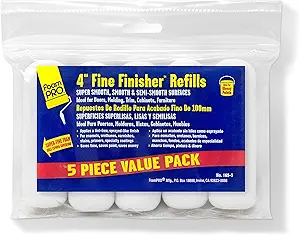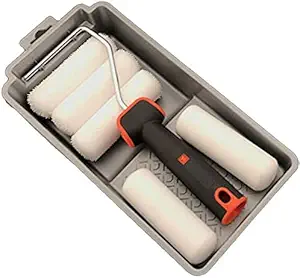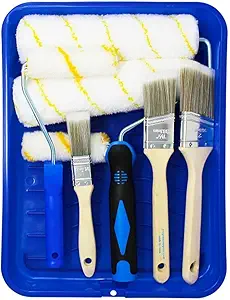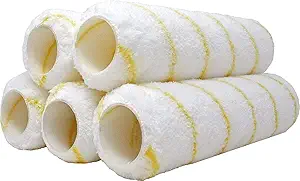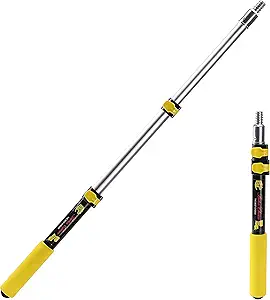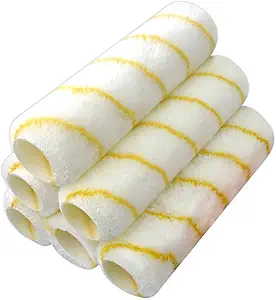The Ultimate Buying Guide for Paint Rollers: Types, Key Considerations, Features, Prices, Tips and FAQs
Overview
Paint rollers are a popular painting tool that can help you achieve a professional finish on your next DIY or professional painting project. However, with so many types, sizes, and features available, it can be challenging to choose the right one. In this guide, we'll explore the different types of paint rollers, key considerations, features, prices, tips, and FAQs to help you make an informed decision.
Types
1. Roller cover: This is the most common type of paint roller, which is used to apply paint to walls, ceilings, and other large surfaces. It consists of a roller frame and a replaceable roller cover that can be made of different materials, such as foam, polyester, or microfiber.
2. Mini roller: This is a smaller version of the roller cover that is ideal for painting tight spaces, such as corners, edges, and trim.
3. Texture roller: This type of roller is designed to create a textured finish on walls and ceilings. It comes with a patterned roller cover that can be made of different materials, such as foam, rubber, or plastic.
4. Foam roller: This type of roller is ideal for smooth surfaces, such as cabinets, doors, and furniture. It comes with a foam roller cover that can be made of different densities, such as high-density or low-density foam.
Key Considerations
1. Nap length: This refers to the thickness of the roller cover. A longer nap length is ideal for rough surfaces, while a shorter nap length is better for smooth surfaces.
2. Roller material: The roller cover can be made of different materials, such as foam, polyester, or microfiber. Each material has its own advantages and disadvantages, depending on the type of paint and surface you're working with.
3. Paint type compatibility: Some roller covers are designed for specific types of paint, such as oil-based or water-based. Make sure to choose a roller cover that is compatible with the type of paint you're using.
Features
1. Handle grip: Look for a roller frame with a comfortable handle grip that allows you to apply pressure evenly and reduce hand fatigue.
2. Roller size: Choose a roller size that is appropriate for the size of the surface you're painting. A larger roller cover is ideal for larger surfaces, while a smaller roller cover is better for tight spaces.
3. Paint roller kit: Some paint roller kits come with additional accessories, such as a paint tray, extension pole, or brush. Consider buying a kit if you're a beginner or need to replace your old painting tools.
Prices
The price of a paint roller can vary depending on the type, size, and features. Roller covers can range from $2 to $20, while roller frames can range from $5 to $30. Paint roller kits can cost between $10 to $50.
Tips
1. Clean the roller cover before and after use to prevent paint buildup and prolong its lifespan.
2. Use a paint tray to evenly distribute paint on the roller cover and avoid drips and splatters.
3. Use an extension pole to reach high or hard-to-reach areas without straining your arms and back.
FAQs
Q: How do I choose the right nap length for my roller cover?
A: - A longer nap length is ideal for rough surfaces, while a shorter nap length is better for smooth surfaces.
Q: Can I reuse a roller cover?
A: - Yes, you can reuse a roller cover if you clean it properly after each use.
Q: How often should I replace my roller cover?
A: - It depends on the frequency of use and the type of paint you're using. As a general rule, replace your roller cover after 5-6 uses or when it starts to show signs of wear and tear.
Conclusion:
Choosing the right paint roller is essential to achieve a professional finish on your next painting project. Consider the type, key considerations, features, prices, tips, and FAQs outlined in this guide to make an informed decision. With the right paint roller, you can save time, money, and effort while achieving a flawless result.



